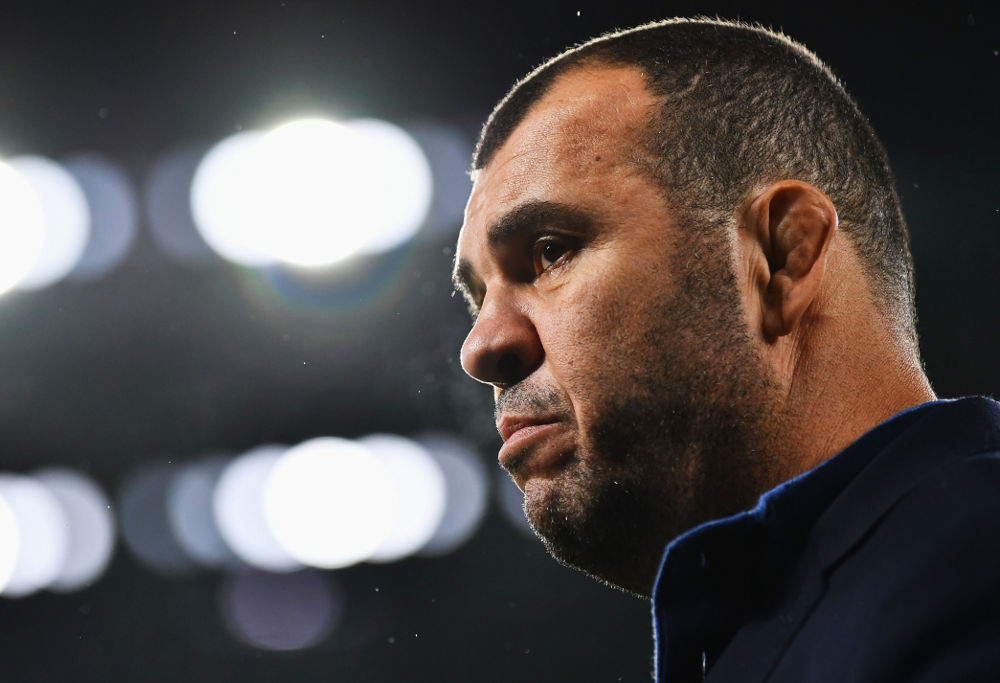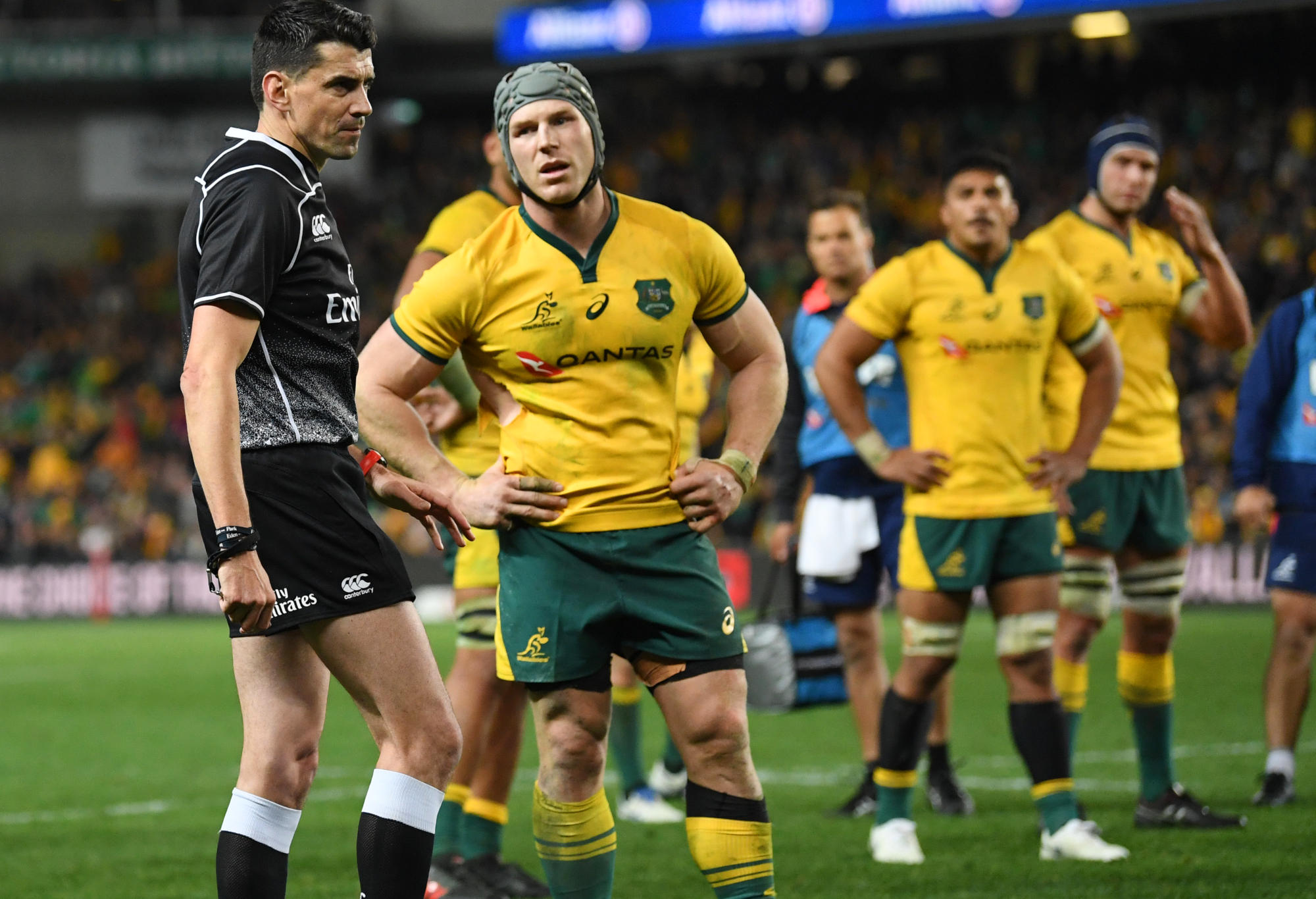There are two damning statistics about the Wallabies and Australian rugby. The first is that the Wallabies have not beaten the All Blacks in Auckland since 1986. That’s 32 years, and counting.
The second damning statistic is that the Wallabies haven’t held the Bledisloe Cup since 2002. That’s 16 years, and counting.
Hop on the internet and google all the changes that have occurred in the world since 1986. It’s a very different place today to when the Wallabies last beat the All Blacks in Auckland, or held the Bledisloe Cup.
Furthermore, the Wallabies have only ever won just four out of 28 Tests played at Eden Park, Auckland. The Wallabies record up to 1986 was satisfactory, four wins out of 11 Tests.
Since then the Wallabies have lost a further consecutive 17 Tests, all bar four of them in the professional era.
This is simply unacceptable, for both the Wallabies and the Australian rugby production line supposedly producing our topline players.
I will discuss briefly the structure of Australian rugby later in this essay, but this weekend head coach Michael Cheika has to pull something out of his bag of tricks, assuming he can find a bag of tricks, and pull out the shock of all shock wins.

Mike Cheika (Photo by Dan Mullan/Getty Images)
Logic says he’s on a hiding to nothing. He says it’s important for the team to remain true to their processes. But on the surface, so many of those processes aren’t working.
The All Blacks, says their coach Steve Hansen, don’t want to repeat the mistakes of last year, whereby they basically took their foot off the accelerator after smashing the Wallabies in the opening BC/RC Test.
The Wallabies then jumping to a surprise 17-0 lead in Dunedin in just 15 minutes is unlikely to be repeated. So what can Cheika do?
Israel Folau’s injury and the mistake-riddled line out give him the opportunity to try something radical. The All Blacks are awake to the tired old Wallas routine. It’s too easy to read their game. It’s time to experiment.
Bring young Tom Banks in for his first Test at fullback and start Joe Maddocks in his first Test on the wing.
Drop Brendan Foley and play both Kurtley Beale and Matt Toomua. They can alternate between 10 and 12.
Now comes the biggie and it won’t be what you’re expecting. There’s been a lot of comment that the Pooper is not working, and I agree totally with this. The Pooper, for all their good work at the breakdown, are a liability at the line out.
But rather than drop either Hooper or Pocock to the bench, what can Cheika do that keeps two of his best players on the field?
The answer came via an ex-schoolmate of mine as we did our tri-weekly coastal walk this morning. “Move Pocock to hooker”, was his suggestion.
I agreed with him immediately. I’ve long held that the hooker ought to play as an extra backrower, so moving Pocock to hooker ensures the Wallabies still have an effective running hooker, or extra backrower, in their team.
Our current leading hookers don’t seem capable of finding their target. Tatafu Polota-Nau has struggled with this problem throughout his career. If he can’t get it right now, then clearly he’s never going to get it right. Tolu Latu seems to have caught the same disease.
Nick Bishop in an accompanying article has gone to his usual excellent lengths to forensically dissect the Wallabies line out. It’s not all the hooker’s fault, as the jumpers must also take some responsibility.
However, moving Pocock to hooker will allow Cheika to select a fourth specialist line out jumper, thus giving them more options.
But Pocock can’t throw, I hear you say. Well, we all know the kind of person Pocock is, he is determined to a fault. He will practice and practice his throwing until he becomes the best line out thrower in the game. You can count on that.

Australia’s David Pocock (AAP Image/David Moir)
Okay, that still doesn’t fix all the problems. But it helps present a whole batch of new challenges for the All Blacks that they wouldn’t have considered up to this point.
Before I move on, a quick comment on the fitness, or supposed lack of, the Wallabies. One other Roarer made a poignant observation that it’s not the fitness of the Wallabies that is the problem. If anything, they might be overfit. The key for the All Blacks is that their skill level is so much superior, that it allows them to conserve energy.
So there you have it. The ABs appear to be fitter only because they’re more efficient in the execution of their skills and game plan. I agree with this observation totally.
Now what about the structures of Australian rugby? How can we do things differently, but more importantly, more effectively?
I suggested to my mate on our walk that the private school comps need to be dissolved and the private schools join in competition with public schools, as I believe occurs in NZ.
He replied this would be too big a shock for them. He suggested an alternative, that the district clubs play a greater role in fostering juniors not only through primary school, but also high school.
This of course does occur now to some extent, but we need to ramp it up to a whole new level.
My mate has two sons who are on the respective periphery Sheffield Shield cricket squads in Tasmania and South Australia. He believes it was a mistake to keep his sons in the private school system, and further believes once they moved to a district club, their development accelerated.
His suggestion is that the schools have their inter-association comps mid-week, and kids play for their district club on the weekend.
This idea is of course not new. I remember back in the early 1970s, we had up to half a dozen guys who would play for our school rugby union first and second XVs on the Saturday afternoon, then play for their local rugby league club on the Sunday afternoon.
Whatever alternate system is arrived at, we can’t continue to keep doing things the same way, whereby the private schools remain a law unto themselves.
As for the NRC, while I support the concept of a national comp, and have done so over 45 years, but I don’t accept the implementation of this NRC.
The location of teams has chopped and changed far too often in Sydney, and the catchment area of some teams is difficult to fathom, again in NSW.
[latest_videos_strip category=”rugby” name=”Rugby”]
There must be a platform for NSW Country and Queensland Country but not in a comp aspiring to perhaps one day be the national comp.
The Country players come together from a very wide area and historically, have no central home base. Their charter is to play and be seen around their entire Country boundary over a period of time.
Why is the Fiji Drua part of the NRC? Very accomodating of us to invite them, but this is our comp, an Australian comp.
I don’t see New Zealand inviting Samoa or Tonga into the NPC. And New Zealand has closer geographical and cultural ties with them than we do with Fiji.
Last but not least, the point scoring was changed to accommodate 8 point tries. Clearly, RA didn’t trust the teams and players to be good enough to play attractive rugby under the current laws, so they had to mess with them.
This is the big difference between NPC and NRC for those trying to make a comparison. The NPC knows exactly what it is. It doesn’t pretend to be something else.
On the other hand, the NRC doesn’t know what it stands for, or RA doesn’t know what it stands for. There is too much messing with the structure.
So Roarers, over to you.































































































